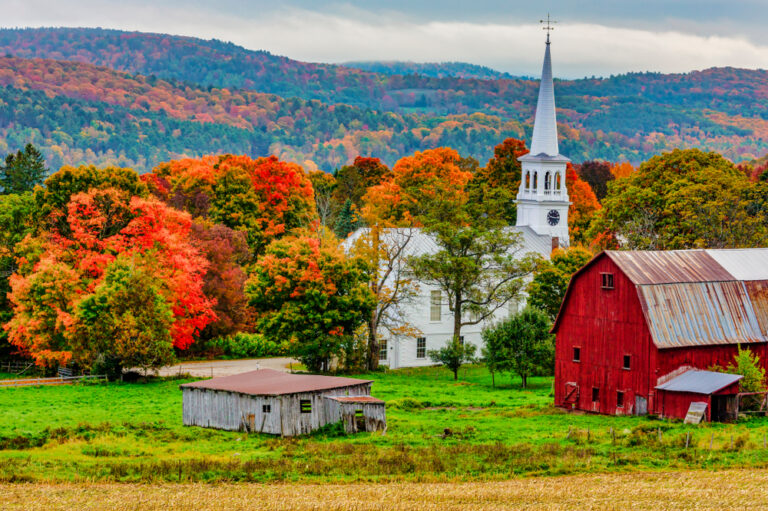
Vermont lends itself perfectly to an RV camping trip! The state’s charming mountain beauty, the bucolic farmlands and quaint houses, and the history of this area all make it a wonderful place for a vacation. Vermont is a wonderful spot for RV camping, whether you want to hike, get out on one of the many lakes, or take a scenic leaf-peeping drive.
If you don’t know where to start while planning an RV camping trip in Vermont, we’re here to help! This article will take you through how to prepare for an RV camping trip, where to stay and what to see in Vermont, and even how to prepare for any weather or natural disasters you could encounter in Vermont.
Read on for helpful advice to make your RV camping trip to Vermont one to remember!
Preparing for RV Camping
The first thing you need to do when planning an RV camping trip is, of course, to secure an RV! You’ll also want to make sure you pack everything you need for your trip. If you’ve never been RV camping before, you may want to do a little research and reading ahead of time as well.
Choosing the right RV for your needs
If you don’t have your own RV, you can rent one easily with RVshare! You’ll want to begin by considering how large your group of campers is. If you have a lot of people, want lots of room, or just want plenty of amenities, a Class A motorhome might be your choice. If you’re traveling solo or with one other person, you might want a Class B campervan. Class C campers are perfect for many families and midsized groups. You can also consider trailers.
Along with thinking about the size of your rental rig, you’ll want to think about how you’re getting around while you’re camping. If you have a Class A or Class C camper, you might want to tow a smaller vehicle behind you to use. If you rent a trailer, once you unhitch you can use the tow vehicle to sightsee.
Finally, many RVshare rentals even have an option where you can have the owner of the RV set it up right at camp for you for a fee. If you’re a beginner and are nervous about doing all the setup yourself, this could be a great way to ease into camping. You can also filter your RV rental search by date, by price, and by other factors like pet-friendliness.
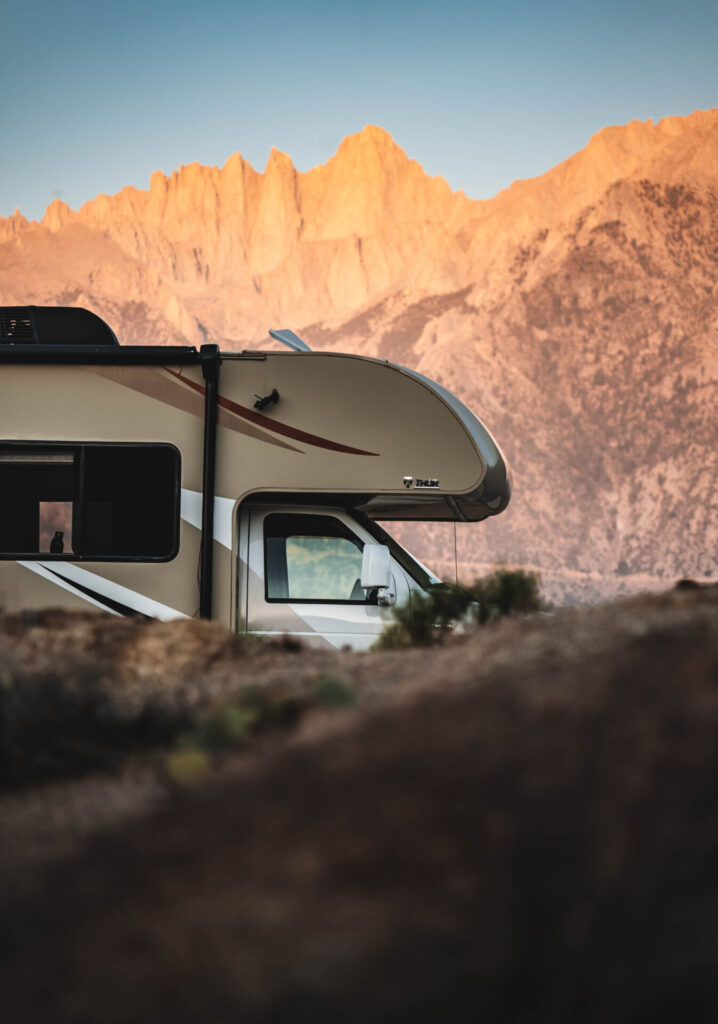
Packing essentials for a successful trip
Once you’ve picked an RV to use, you’ll need to make sure it’s outfitted for your trip! It might be helpful to think in terms of two packing lists for your camping trip – one for you personally (and anyone else you may have to pack for), and one for the RV.
On your personal packing list, you’ll want:
- Clothing appropriate for the weather and activities you’ve planned. Pack for the number of days you’ll be gone, or the number of days between laundry stops.
- Toiletries
- Medications
- First aid kit
- Sunscreen
- Bug spray or citronella candles
- Entertainment (books, games, movies)
- Outdoor gear (hiking boots, bathing suit, paddleboards, etc)
- Cold or warm weather gear as needed (heavy jacket, hat, mittens, sun hat, rain jacket)
- Flashlight
- Extra batteries
- Groceries
- Electronics & chargers
- Pet supplies
- Quarters for showers or laundry
As far as your RV rental, different rentals include different things. In some cases, you may find that linens, dishes, and even outdoor equipment are included while in other cases, none of those things are provided. You may need to pack items for your RV including:
- Pots & pans
- Dishes
- Utensils – don’t forget a can opener, bottle opener, spatula, set of knives, etc.
- Dish towels & sponges
- Sheets & pillows
- Bath Towels
- Tool kit
- Folding camp chairs
- Blankets
- RV leveling blocks
- Sewer hose and adapter
- Freshwater hose
- Surge protector
Check your rental listing or check in with the RV owner to make sure you know what’s included and what you need to bring!
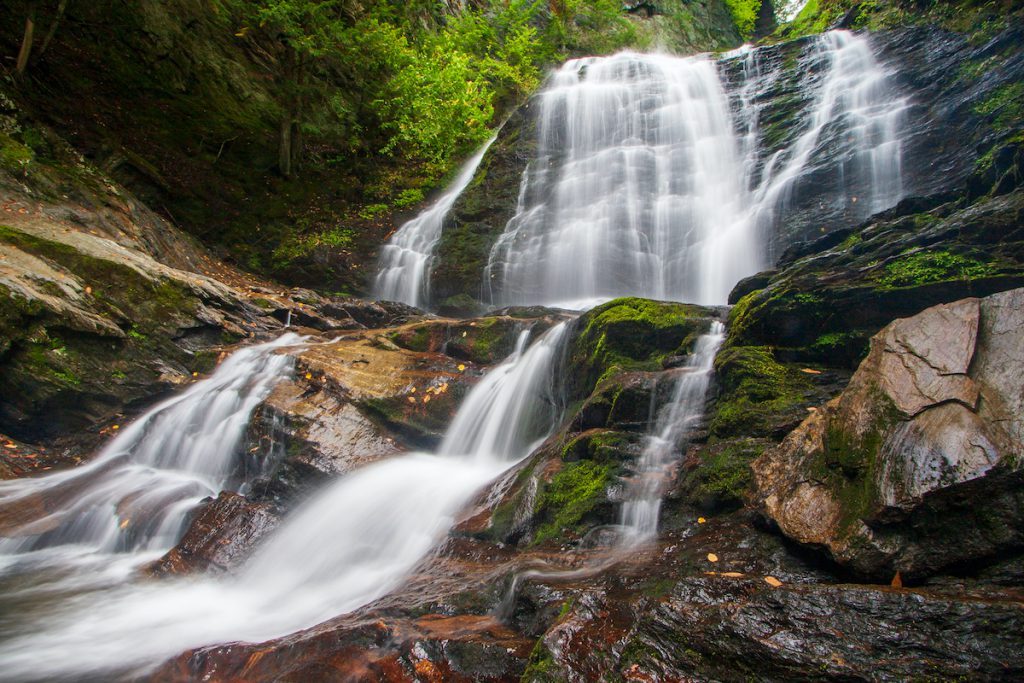
Considerations for Camping in Vermont
Each state can have different RV laws, although most of them are the same from state to state. However, you’ll want to make sure you know Vermont’s laws ahead of time to avoid any problems.
In Vermont, the maximum RV width is 102 inches. The maximum motorhome length is 46 feet, and the maximum trailer length is 53 feet. The maximum combined length for two vehicles (where one is towing the other) is 65 feet.
Passengers are allowed to ride in truck campers. Trailers that are over 3,000 pounds must have trailer brakes on one axle, a breakaway switch, and safety chains. Trailers over 6,000 pounds must have brakes on all wheels, plus a breakaway switch and safety chains.
Also, overnight parking in rest areas is not allowed.
Researching campground options and making reservations
There are lots of options for camping in Vermont! You’ll want to begin by deciding what areas you want to visit in the state. Do you want a nature-lovers camping trip, with hiking and beautiful lakes? Do you want a history-lovers tour of important sites in the state? Some of each?
Once you’ve decided where you’ll be camping, you can begin to narrow your search. You can use a website that specializes in finding campsites, such as Hipcamp, The Dyrt, or Roverpass. Harvest Hosts offers RV camping at thousands of farms, wineries, and other scenic venues. These websites also offer easy online booking, so you can reserve your spot as soon as you find one you like.
If you’re camping during the summer, or possibly during leaf-peeping season, you’ll want to make reservations ahead of time!
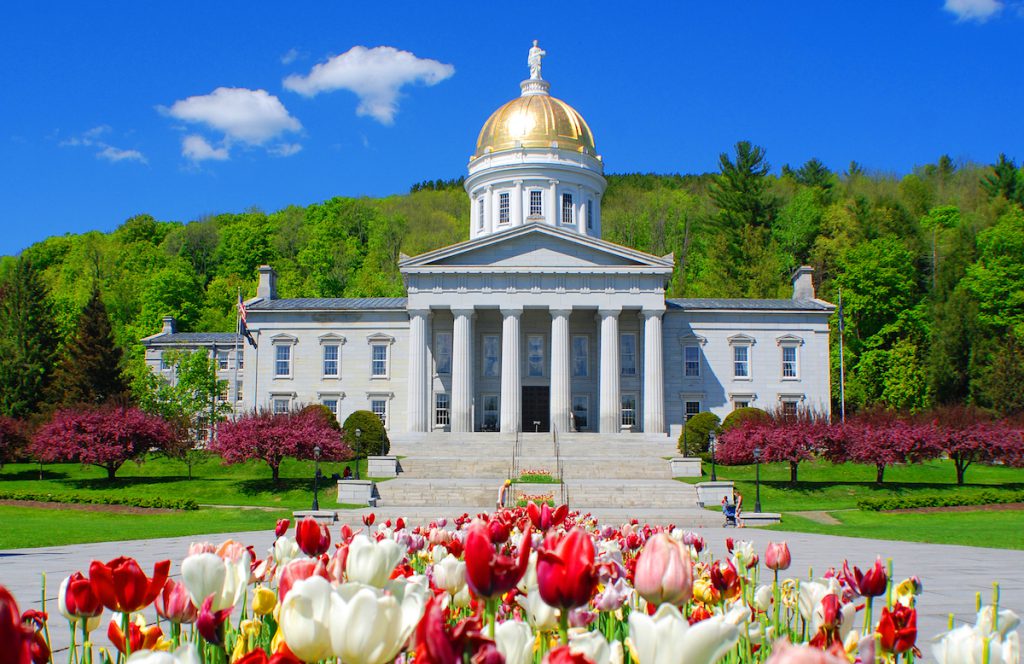
Finding Campgrounds
As you look for specific campgrounds, you may want to narrow your search by the type of campground. Vermont has everything from luxury campgrounds with lots of perks, to bare-bones campgrounds, to urban campgrounds near bigger towns.
Exploring public campgrounds in Vermont
There are some wonderful public campgrounds in Vermont where you can camp! Public campgrounds tend to be cheaper than private campgrounds and are a great option if you’re trying to vacation on a budget. They may also have fewer amenities than private resort campgrounds. However, you’ll find stellar options in places like state and national parks, national forests, and other lands.
National Park Camping
Although Vermont does not have a national park, the state does have some other nationally-designated sites. They are:
- Appalachian National Scenic Trail
- Marsh – Billings – Rockefeller National Historical Park
- North Country National Scenic Trail
While there is no camping and no food service in the national historical park, it’s near Woodstock, VT and Hartford, VT and there are plenty of options in those towns for campgrounds and restaurants.
National Forest Camping
The Green Mountain National Forest in Vermont is notoriously scenic, and is a wonderful place to camp! Visitors can hike, bike, hunt, fish, and go cross-country skiing in winter. Autumn is a popular time to visit, with many people taking foliage tours. The forest also has more than 2,000 historic sites and is a popular spot to see moose.
The Greenwood Lodge and Campsite, and the Moosalamoo Campground are both great options for camping in the Green Mountain National Forest.
State Park Camping
Vermont has many lovely state parks where you can camp as well! Button Bay State Park along Lake Champlain is a great fishing spot with hiking trails as well. Mount Ascutney State Park is one of Vermont’s original state parks and is a popular place for hiking, hang gliding, and enjoying the wilderness. Stillwater State Park on the edges of Lake Groton is a nice spot for swimming, fishing, hiking, and biking.
Exploring private campgrounds and RV parks
If you’re looking for more amenities, like hookups or dump stations, WiFi, and possibly even planned events and activities at camp, you may want to consider a private campground in Vermont. Try glamping in Vermont if you really want to go upscale. You’ll find guided hikes, snow tubing, snowmobiling, and other activities offered at some of the glamping resorts in the state.
Sugar Ridge RV Village & Campground in Danville is a unique spot that’s popular in the fall. The resort has horse-drawn wagon rides available, along with an 18-hole mini golf course. Moose River Campground in East Haven has planned activities and easy access to the White Mountains.
Boondocking in Vermont
When you really want to get away from it all, try boondocking in Vermont! Boondocking and dry camping mean that you’re completely self-contained, with no hookups or amenities – be ready to supply everything including drinking water. Bear’s End in Shaftsbury is near Somerset Reservoir. You can kayak on nearby Bourne Pond, and there are hiking trails nearby.
Bingo Campground in the Coolidge State Forest is a picturesque site near a mountain stream. There are ten campsites that are available on a first-come, first-serve basis.
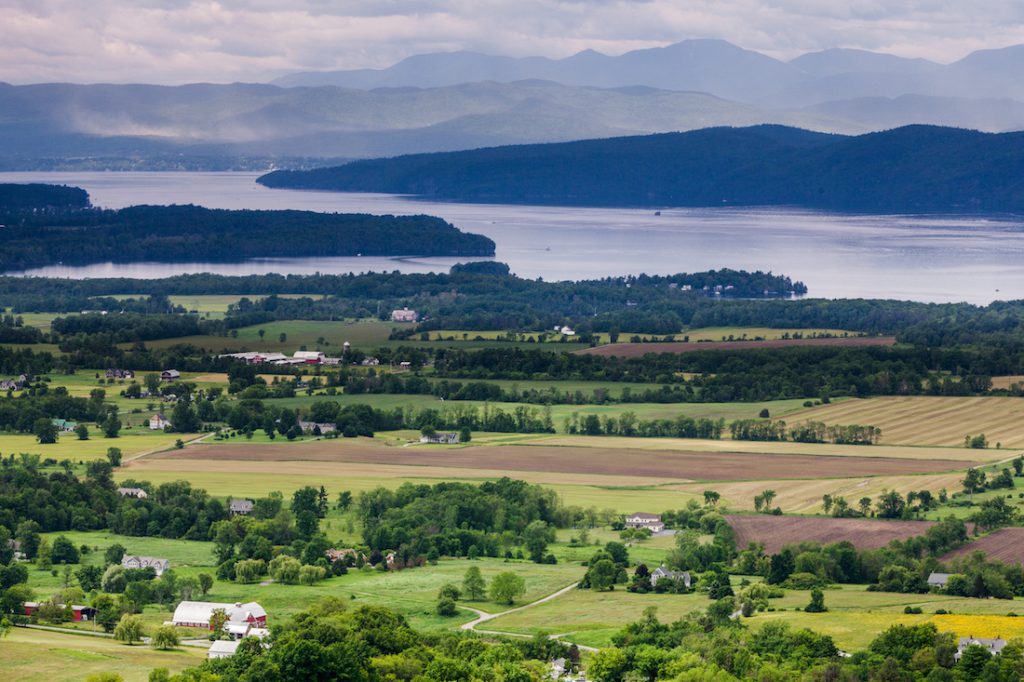
Planning your itinerary
Now that you have your RV squared away, and you’ve narrowed down where you plan to camp, it’s time to consider your itinerary! Most people associate Vermont with quaint small towns, beautiful mountains, and lots of trees (many of which produce delicious maple syrup!). The state is full of those things…and much more!
Features and attractions in Vermont
With so many scenic forests and mountains, it’s no surprise that one of the best ways to explore Vermont is by taking a scenic drive! The Stone Valley Byway from Manchester to Hubbardton has amazing lake views. Although the drive is just 30 miles long, you’ll want at least two hours so you have time to pull over and take pictures.
You’ll also want to spend some time investigating the top landmarks in Vermont! Mount Independence was an important site during the Revolutionary War, and live reenactors explain the history of the site each summer. At almost 600 feet deep, Rock of Ages Quarry is the world’s largest operating deep-hole quarry. You can tour the quarry, and even try bowling on a granite bowling lane.
Save some time to see national sites in Vermont as well, such as the Marsh – Billings – Rockefeller National Historical Park. This site was the boyhood home of George Perkins Marsh, one of the first conservationists in the U.S. It later passed to Frederick Billings and then to Laurance S. and Mary F. Rockefeller. You can take a guided tour of the mansion and learn about forestry, conservation, and other topics.
Festivals, fairs, and events in Vermont
You may want to plan your trip around a special event in Vermont, like the state fair or a music or arts festival. Some events, like the fair, have RV camping on-site so you don’t have to miss any of the festivities. You might even check with the owner – sometimes for a fee, owners will come set up your RV at the site for you. When you arrive, you can get right to enjoying the event!
Exploring Outdoor Activities in Vermont
Vermont’s mountains, forests, and lakes lend themselves to many outdoor activities! Whether you want to explore a snowy winter wonderland or enjoy a summer day on the trails, you’ll find something to do outdoors in Vermont.
Hiking, biking, and nature trails
Hiking is a great activity that is low-cost, healthy, and a wonderful way to explore new areas! If you’ll be hiking in the mountains, be sure to wear plenty of sunscreen and stay hydrated.
Some of the best hiking trails in Vermont include:
- Camel’s Hump Trail
- Lye Brook Falls Trail
- Sterling Pond Trail
- The Chin (Mount Mansfield) via Sunset Ridge Trail
- Killington Peak via Bucklin Trail
If you prefer mountain biking to hiking, try one of these popular mountain biking trails!
Fishing, boating, and water activities
Water activities make great vacation memories, and there are lots of places in Vermont where you can enjoy the water! Try fishing in one of Vermont’s many lakes like Silver Lake or Lake Bomoseen. Enjoy a day relaxing by one of Vermont’s best beaches like the beach at Crystal Lake State Park or Warren Falls. You can also hike to one of the many waterfalls that dot the state and enjoy a picnic at the falls.
Wildlife viewing and photography
There is lots of wildlife in Vermont that you can see and even photograph! The state is known as a home for moose, bears, coyotes, bobcats, and deer. Smaller animals also live in Vermont, including muskrats, red foxes, porcupines, and river otters.
If you want to view wildlife in Vermont, here are some tips. Moose are often seen in the wetlands near West Mountain, Wenlock, and Victory Basin Wildlife Management Areas. You might also spot them at Conte National Wildlife Refuge. They’re often out from 5:30-9:30 am in late spring and summer. Give them plenty of room, because moose can charge quickly!
You can witness the snow and Canada goose migration each fall at the Dead Creek Wildlife Management Area. Geese take to the skies by the thousands, turning it gray and white as they fly south.
Each spring, songbirds begin to emerge and sing around the state as well. Try camping in one of Vermont’s forests to hear them chirp and warble, and hopefully to catch a glimpse of their plumage!
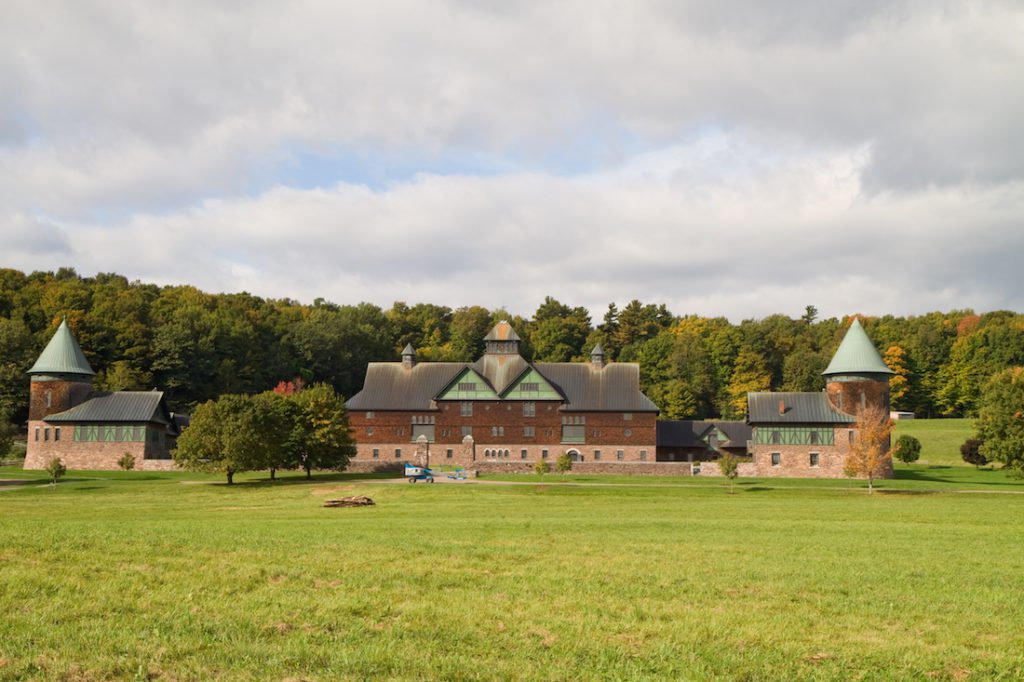
Family-friendly activities and attractions
If you’re headed to Vermont with your family, you’ll find lots to do! You can hit the trails or water for a day outside, spend a day learning about history, or head to a local amusement park for a day of fun! Be sure to explore urban areas like Montpelier or Burlington while you’re there as well.
Historical sites and museums
Vermont has lots of history to share with visitors! Head to the Vermont State House to see one of the oldest, best-preserved state capitals in the U.S. You can take a free tour of the capital while you’re there. Shelburne Farms is a historic farm along Lake Champlain. It’s a National Historic Landmark, a present-day working farm, and a place to learn about sustainability. The Bennington Battle Memorial commemorates a Revolutionary War battle, and is the tallest monument in Vermont.
Vermont also has historic covered bridges and even underwater historic preserves.
If you want to spend a day at the museum, the New England Maple Museum is a uniquely Vermont attraction that shows visitors how the famous syrup gets from the tree onto your breakfast table. The American Museum of Fly Fishing promotes conservation and teaches the history and traditions of fly fishing. The Montshire Museum of Science is a hands-on science museum with exhibits on nature, technology, and physical sciences.
Amusement parks, zoos, and wildlife refuges
There are amusement parks in Vermont if you want to spend a thrilling day with the family! Bromley Mountain Adventure Park in Peru, VT is part of a ski area in winter. In summer, it’s an adventure amusement park with an alpine slide, mini golf, a waterslide, and more. The Pump House indoor waterpark in Jay, VT has plenty of waterslides, plus a play area for younger kids. Santa’s Land in Putney is a Christmas-themed park that is kitschy and fun. Younger kids will love the smaller park that includes a gift shop, a train, a fun house, and a giant slide.
If you want to visit a Vermont zoo or aquarium, the ECHO, Leahy Center for Lake Champlain has dozens of local fish and reptiles. The center, on the shore of Lake Champlain, also has a life-sized recreation of the General Butler shipwreck and an active NOAA weather station. The VINS Nature Center is a conservation center and bird rehabilitation sanctuary. Finally, the Vermont Reindeer Farm in Orleans near the Canadian border is a working farm, and the home of the only live reindeer in Vermont.
Safety and Preparedness when RV Camping in Vermont
Vermont is an excellent choice for an RV camping trip! However, it’s important to know the risks and dangers of camping in Vermont. If you know about natural threats ahead of time, you can be better prepared if an emergency should happen while you’re camping there. For more general RV safety tips, be sure to read our guide to RVing safely!
Weather conditions and natural disaster preparedness
Vermont does experience some natural disaster threats in the state. Though rare, the most common natural disasters are flooding, thunderstorms, winter storms, and forest fires.
If there is a flood while you’re camping in Vermont, be careful driving your RV. Flooded areas can be deceptive, and you can accidentally drive into a spot with more water than it appeared. Be sure to head to higher ground during flooding. Listen to local radio or TV weather reports so you know if the rain is continuing. You’ll also want to listen to whether your area needs to evacuate.
Also, watch for thunderstorms. If you see lightning, head indoors immediately and wait until the storm has passed.
To avoid or prepare for forest fires, know the fire restrictions for the area where you plan to camp. Know how to safely start and put out a campfire if you do have one. Finally, check weather reports and advice from local authorities. You don’t want to start a campfire on a windy, dry day!
If you’re RVing in Vermont in the winter, you’ll also want to check out these tips on driving your RV in winter weather!
Wildlife encounters and precautions
One of the best things to do in Vermont is to enjoy the wonder and beauty of the state’s mountains and forests. However, that’s also where you’re most likely to encounter a bear or moose. It’s helpful to hike in groups and make plenty of noise so you don’t startle an unsuspecting animal. Don’t let children or dogs run ahead on trails. Read any warning signs carefully and consult with rangers on what to do if you encounter a wild animal.
The best way to know if you’re a safe distance from a wild animal is to use the thumb trick. Give a “thumb’s up” and extend your arm completely out. Close one eye and see if you can cover the animal with your thumb. If it’s completely covered, you’re far enough away. If not – back up!
There is so much to see and experience in Vermont! Hopefully, this guide has helped you to determine what to see and where to stay on your trip. An RV camping trip is a great way to make lifelong memories with loved ones.
More Inspiration for your Vermont Travels
- The Top 10 Amusement Parks in Vermont
- Urban Camping in Vermont
- Top 10 Waterfalls in Vermont
- Luxury Camping in Vermont
- Glamping in Vermont
- Fishing in Vermont
- Top 10 Beaches in Vermont
- Top 26 Bucket List Destinations in Vermont
- Boondocking in Vermont
- Top 10 Landmarks in Vermont
- The 10 Best RV Trips To Take In Vermont
This post may contain affiliate links.
